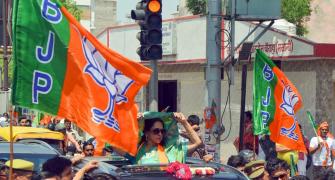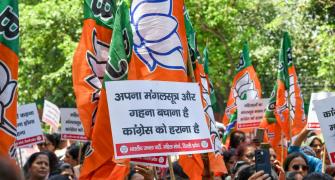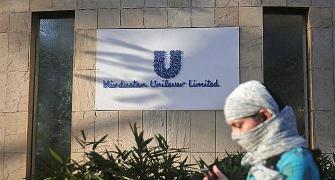Of late, Indian salaries have seen a quantum leap on the back of a sound economic growth. Though the affluent salaried class is raking in the moolah, they have little or no time to tackle the complex issue of taxation.
In such a scenario, remuneration planning plays an important issue. Normally, a salary structure comprises basic salary, dearness allowance and other allowances.
Sometimes these allowances form a substantial part of the salary. Under the Income Tax Act, certain allowances are either fully exempt or exempt to a specified limit or fully taxable.
So the remuneration should be structured in such a way that the total taxable income will come down. We will consider an example to clarify this issue.
Mr. X is working as a manager for ABC Pvt Ltd. The company offers him two alternative remuneration packages. In one package, the firm gives allowances, and in the other, reimbursement. The salary packages are illustrated in Table I. Now we will consider the effects of each allowance to arrive at the taxable income.
|
TABLE I | ||
|
ITEMS |
Package-I |
Package-II |
|
Basic salary |
Rs 5,00,000 |
Rs 5,00,000 |
|
Dearness Allowance (Not Considered For Retirement) Rs.1,00,000 |
Rs 1,00,000 |
- |
|
House rent allowance(hra) (actual rent paid rs.80,000) |
Rs 1,00,000 |
- |
|
Rent free accommodation (fair rent) |
- |
Rs 1,00,000 |
|
Transport allowance |
Rs 12,000 |
- |
|
Conveyance from residence to office(estimated cost) |
- |
Rs 10,000 |
|
Conveyance allowance (utilised rs. 20,000) |
Rs 40,000 |
- |
|
Free 1600 cc car (estimated expenses) |
- |
Rs 60,000 |
|
Education allowance for 2 children |
Rs 10,000 |
- |
|
Free education (estimated cost) |
- |
Rs 10,000 |
|
Medical allowance |
Rs 15,000 |
- |
|
Medical reimbursement |
- |
Rs 15,000 |
|
Telephone allowance |
Rs 10,000 |
- |
|
Telephone reimbursement |
- |
Rs 10,000 |
Dearness allowance is fully taxable. If dearness allowance is considered for retirement benefits, then while considering salary for calculating HRA exemption and the value of rent free accommodation it is added to the basic salary.
|
TABLE II | ||
|
ITEMS |
Package-I |
Package-II |
|
Basic salary |
Rs 5,00,000 |
Rs 5,00,000 |
|
Dearness allowance |
Rs 1,00,000 |
Rs 1,00,000 |
|
House rent allowance |
Rs 70,000 |
- |
|
Rent free accommodation |
- |
Rs 50,000 |
|
Transport allowance |
Rs 2,400 |
- |
|
Conveyance from residence to office |
- |
EXEMPT |
|
Conveyance allowance |
Rs 20,000 |
- |
|
Free 1600cc car |
- |
EXEMPT |
|
Education allowance |
Rs 7,600 |
- |
|
Free education |
- |
Rs 10,000 |
|
Medical allowance |
Rs 15,000 |
- |
|
Medical reimbursement |
- |
EXEMPT |
|
Telephone allowance |
Rs 10,000 |
- |
|
Telephone reimbursement |
- |
EXEMPT |
|
Taxable salary |
Rs 7,25,000 |
Rs 6,60,000 |
|
Tax |
Rs 1,67,500 |
Rs.1,48,000 |
|
Education cess |
Rs 3,350 |
Rs 2,960 |
|
TOTAL TAX |
Rs 1,70,850 |
Rs 1,50,960 |
Only if you are staying in a rented accommodation, you can claim HRA exemption to the specified limit. HRA is exempt to the extent of minimum of i) Actual HRA received; ii) 50 per cent of salary; iii) Rent paid - 10 per cent of salary.
So in Package-I: Rs 30,000 is exempt from HRA and Rs 70,000 is taxable. Sometimes, the company provides rent-free accommodation to employees. This is a perquisite and its taxable value is 10 per cent of the salary. So in Package-II, the taxable value of rent-free accommodation is Rs 50,000 per cent.
In case of transport allowance, the exemption is up to Rs 800 per month, that is, Rs 9,600 per annum. So in Package-I, Rs 9,600 is exempt and Rs 2,400 is taxable. In case of conveyance allowance, the facility is taxfree in the hands of employees. So in Package-II, such conveyance facility is provided and is fully exempt - irrespective of the cost. Such allowance is exempt from I-T to the extent it is utilised.
Since Mr X has utilised Rs 20,000 of the Rs 40,000, the balance is taxable. Previously free-car facility was considered as a perquisite and its value is added while calculating taxable income, but from assessment year 2006-07 onwards it is not considered as a perquisite. So under Package-II, such facility is received by Mr X and is exempt.
Now in Package-I, Mr X has received education allowance of Rs 10,000 for two children. As per I-T Act, such allowance is exempt to the extent of Rs 100 per month per child. So in this case Rs 2,400 is exempt and Rs 7,600 is taxable. In Package-II, the company is providing free education to the employee's children at a school run by the employer at an estimated cost of Rs 10,000. In this case, there is no exemption and it is fully taxable.
In Package-I, Mr X has received a medical allowance of Rs 15,000. Such allowance is fully taxable as per I-T Act. Sometimes the firms reimburse medical expenses. Such reimbursements up to Rs 15,000 is exempt. In Package-II, Mr X has received Rs 15,000 as medical reimbursement, which is fully exempt. Telephone allowance is fully taxable. So in Package-I, Mr X telephone allowance of Rs 10,000 is fully taxable, but reimbursement of the same is fully exempt.
Now we will calculate the taxable income and the tax liability of Mr X under both the packages. We can notice that by restructuring a remuneration package one can very well reduce his taxable salary. Further some company provides LTC, leave travel concession facility to the employees, such facility is tax-free provided the assessee has availed LTC, twice in a block of 4 years. So the employee should take a note of this fact.








